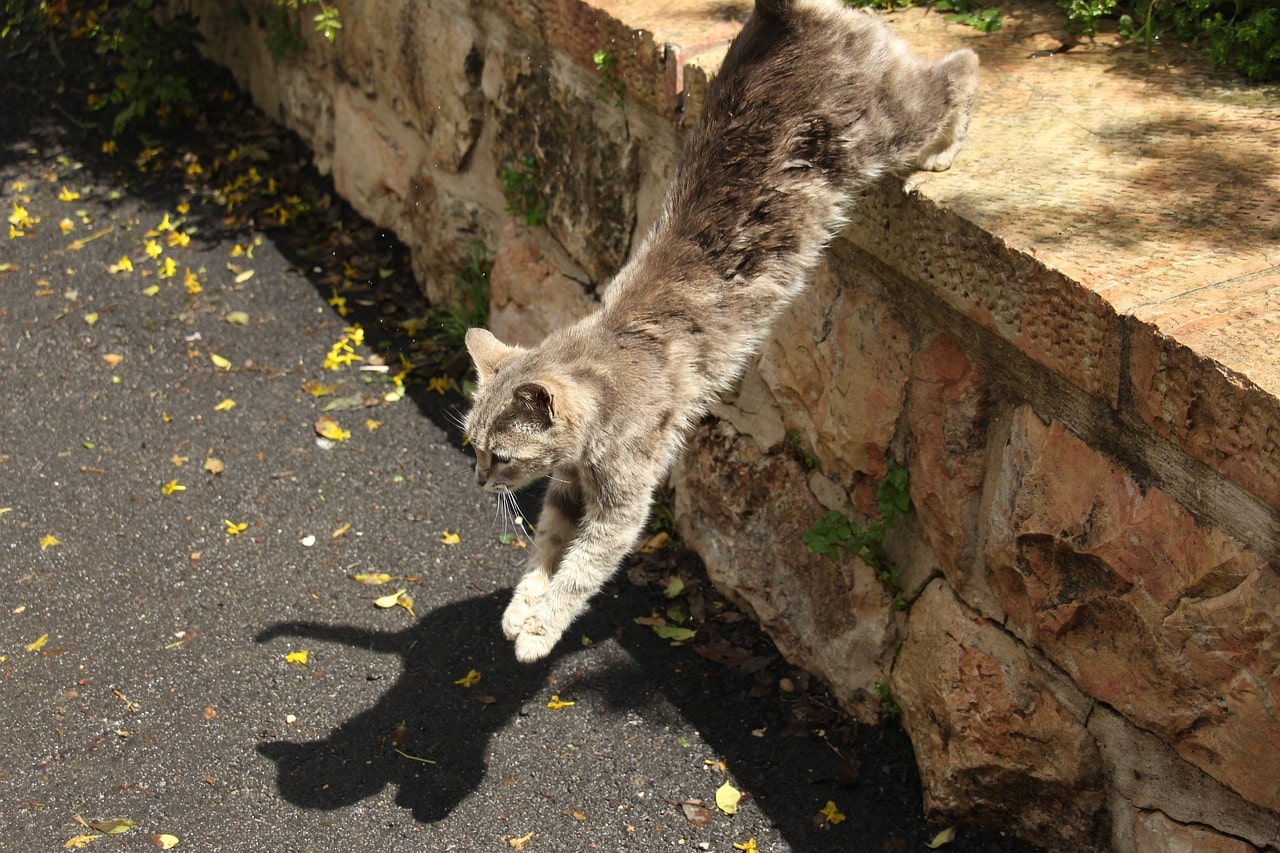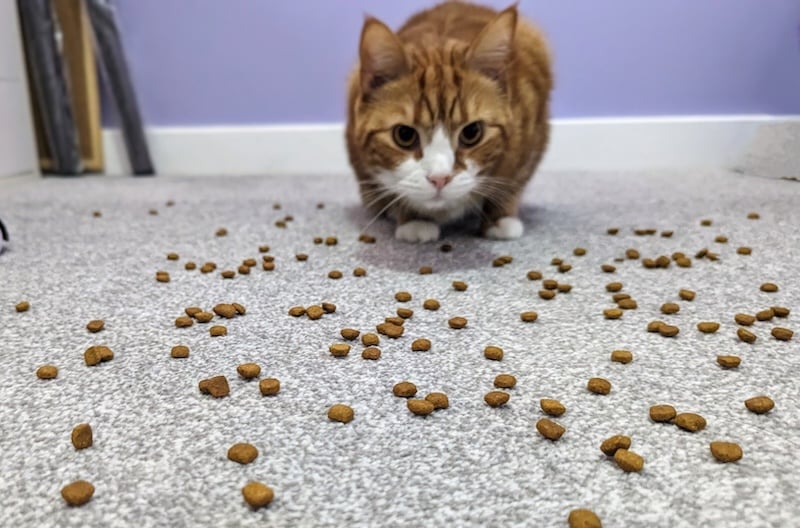Most people have heard that cats have the ability to always land on their feet. Despite the popularity of this notion, is it true? Even though many things are still unknown about cats, their ability to land on their feet is not one of them.
Cats do land on their feet most of the time. Of course, there will be instances of cats not landing on their feet, but cats have a specific body type and ability that allows them to land on their feet in most scenarios. Let’s take a closer look at why cats can land on their feet from a scientific perspective. Believe it or not, science tells us a whole lot about this phenomenon.
Click to skip ahead:
- Do Cats Always Land on Their Feet?
- The Righting Reflex
- Body Weight and Surface Area
- Zoom in On The Legs
- Fall Height Matter
- Don’t Let Your Cat Fall

Do Cats Always Land on Their Feet?
First, we should mention that although cats normally land on their feet, it is possible that they land on their backs from a fall. The height of the fall and their weight are two factors that may inhibit a cat’s ability to land on its feet.
Nevertheless, most cats can land on their feet when they fall. That’s because cats have this balancing system built into their ears called the righting reflex. This righting reflex was discovered in 1894 by Etienne-Jules Marey, who used a chronophotographic camera to capture a cat falling at 60 frames a second.

The Righting Reflex
The righting reflex is the cat’s specific ability to turn itself the right way as it is falling. What allows cats to have this righting reflex is the vestibular apparatus inside their ear. This apparatus, which enhances balance and orientation, will enable cats to figure out which way is up quickly. As a result, they can turn their head, allowing their body to follow when they fall.
With a response as impressive as the righting reflex, you might think that only adult cats have this power. On the contrary, kittens start demonstrating the righting reflex as early as three weeks. Almost all kittens will have this reflex fully developed by the time they are seven weeks old.

Body Weight and Surface Area
In addition to the righting reflex, cats’ bodies have evolved to climb up trees and fall from them safely. As a result, their overall body enhances the righting reflex and safety whenever they fall from great heights.
For one thing, cats have a unique skeletal system. They don’t have a collarbone, and their backbone is incredibly flexible, complete with 30 vertebrae. This skeletal system is very important for the righting reflex. Being so flexible, the cats can quickly correct themselves without injuring their bones.
More so, cats are incredibly light in comparison to their surface area. By having a greater surface area than body weight, cats can slow their velocity whenever they are falling. When this happens, they have more time to react to the fall and adjust their bodies to act more like a parachute.
A cat’s maximum velocity is nearly half that of a human. Cats reach a maximum velocity of 60 mph. Humans, in comparison, reach a maximum velocity of 120 mph. In other words, cats have a slower velocity because of their weight-to-body ratio.
Zoom in on the Legs
In addition to the righting reflex, cats’ legs largely impact their survival and ability to fall safely. The righting reflex would be nothing if their legs couldn’t support their weight and absorb shock whenever they fall from tall heights.
Given that cats spend a lot of time in trees, their legs have evolved to be incredibly muscular and reduce shock impact. Even more so, cats have angled legs that make them great for jumping, climbing to great heights, and absorbing impact if they fall.
To put all of this together, a cat’s righting reflex works together with its powerful legs to correctly orient the cat and absorb impact with falls. Without both of these aspects, the cat would be injured in some way from a great height.


Does Fall Height Matter?
Even with the righting reflex, the height of the fall impacts the cat’s ability to land on its feet dramatically. When it comes to humans, higher falls tend to lead to the most injuries. With cats, however, falls from higher heights often result in fewer injuries.
According to a 1987 study, many records were analyzed to see how height affects a cat’s ability to land. In all of these records, the cats fell from multistory buildings. A whopping 90% of cats survive the fall. Meanwhile, only 37% of them needed emergency care afterward.
Interestingly, cats that fell between 7 and 32 stories suffered fewer injuries than cats that fell between 2 and 6 stories. One cat even fell at 32 stories, landed on concrete, and only received a few injuries, including a chipped tooth and a minor puncture to the lung.
Most scientists believe that falling from greater heights gives cats more time to respond. When falling from greater heights, they can correct themselves earlier on and then respond to the fall much as a flying squirrel does.
Because of its greater air resistance and slower velocity, a cat can stretch its legs out, relax, and increase drag resistance. This increased drag resistance makes the fall less hard, resulting in fewer injuries.


Don’t Let Your Cat Fall
Even though cats have an instinct to land on their feet when they fall, you certainly shouldn’t push your cat off a ledge or put them in some type of scenario where they could fall. As we mentioned initially, the righting reflex doesn’t guarantee that the cat will land on its feet. Instead, the reflex only makes it more likely.
The last thing you want is to put your cat in unnecessary danger. Make sure to keep your pet cat safe, healthy, and away from open ledges. This is especially true of old and overweight cats. Their bodies are not of optimal ability to land safely, even with the righting reflex.
- Related Read: How High Can a House Cat Jump? (Highest & Average Jumps)

Final Thoughts
Shockingly, the old saying that cats will always land on their feet is true. Because of cats’ righting reflex, low weight-to-body ratio, and shock-absorbing legs, they can securely land on their feet after falling from great heights unscathed.
Once again, you certainly shouldn’t test out your cat’s righting reflex, but you should rest assured that they likely won’t hurt themselves when climbing up a tree.
Featured Image Credit: Pixabay






